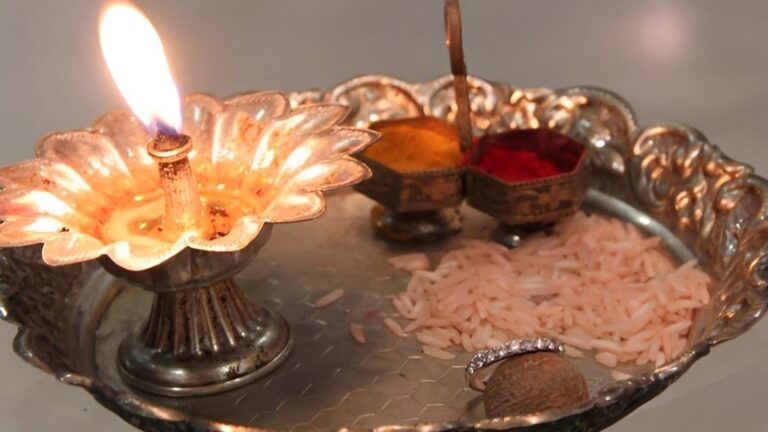Arthi
- Arti is a Hindi word that means “light ceremony.” Aartika comes from the Sanskrit language. Waving lit candles in front of God or images to be praised It is a method of connecting with the Almighty and praying to Him. The waving of lighted lamps expresses our thanks to God for providing for and meeting all of our needs.
- When arti is performed, the worshiper holds the lit lamps and faces the idol or divine element, such as the River Ganga, while chanting mantras or singing a devotional song to God. Arti is waved in a circular or clockwise motion around the deity. The primary importance of art reminds us to focus on God, who is at the center of all activities, and other hands must recognize that all worldly things are secondary in importance.
- After being soaked in pure ghee or butter, the wicks are lit. Arti is revered as the defender of the ancient Vedic period, so Arti nirvana entails the removal of all sorrows and darkness from one’s life, as well as complete love for God.
- It is performed at the conclusion of any auspicious event or ritual in order to correct our errors, appease the deities, and obtain divine blessings from God.
- Sadhus (monks) and pujaris (servants) perform the rituals at temples and devotees’ homes. It is waved in odd numbers, such as 3.5 or 7 in circular movements from the deity’s head to toe while chanting Vedic mantras or hymns. For art, they use camphor or ghee-soaked wicks, depending on their preference. They perform arti with joyful hymns accompanied by musical instruments such as dhol, bells, conch, and veena, and the poojari waves arti to God while holding a ghanti in his hand.
Significance
- When you perform the aarathi, you are surrendering to God in order to overcome the desires of this world. The aarti is intertwined with all Hindu rituals and contains profound spiritual sentiments.
- A small, lighted lamp chases away the darkness of that place. It reminds self-love toward God
- Hand movements over the flame elicit the belief that God is with us and protecting us from all evil. It emits a fragrance from the place of worship. It reminds us of the idea of offering sacrifices .
- Hindi temples perform arti five times a day. Each of these works has a significance all its own.
The important five aaratis are
- Mangal arti
- Shangar Aarti
- Rajbhog Aarti
- Sandhya Arati
- Shayan Aarti
This art is a divine form of worship. When performing arti to “The Celestial God,” it is a treat for the eyes of 33 crores of gods and goddesses who come for darshan. The most commonly sung arti is Om Jai Jagdish Hare (Jai_Jagdish_Hare), also known as “the universal arti.” It is dedicated to all deities. Other deities, such as Om Jai Shiv Omkara, Om Jai Lakshmi Mata, Om Jai Ambe Gauri, Om Jai Adya Shakti, Om Jai Saraswati Mata, Om Jai Gange Mata, Om Jai Tulsi Mata, and Om Jai Surya Bhagvaan, use different aarathi..


